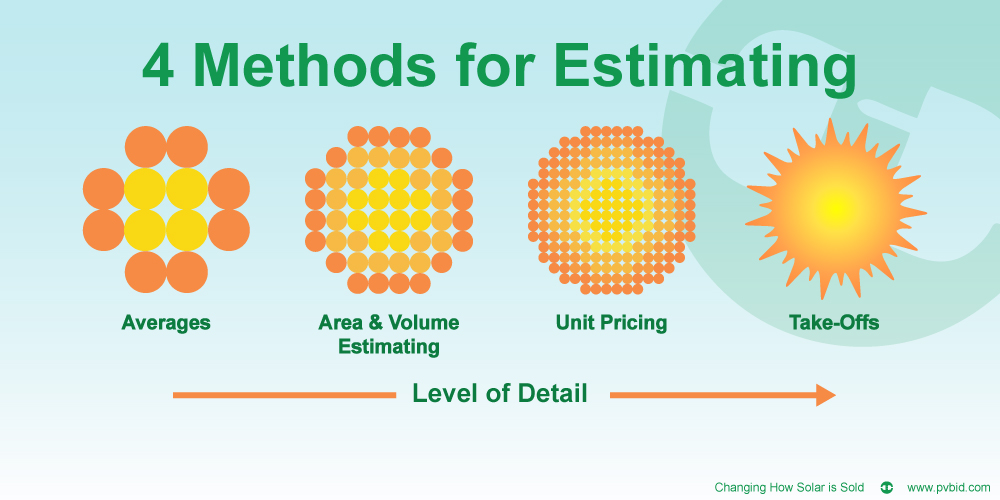Solar estimating is an art form. Don’t get me wrong. Much of it is straight research and accounting. But, like art, there’s a special sauce, a nuance that you can’t really find in the books. The best estimators add value engineering, price negotiation, and distill down the project to what is truly needed and what isn’t relevant for the customer. Quite the roll to play!
The magic isn’t quite so magic, however. The trick is to draw on the right tools when the situation calls for it. Today, I’m beginning a four-part series about the various methodologies for solid estimating. Each has its pros and cons, and we’ll talk about that in greater detail in each weekly post.
I like to say we can break solar estimating down into two methods: Averages and Take-offs. This is a bit of an oversimplification. Estimating is made up of a variety of tools and approaches that range from extremely complex to overly simple. For this blog, we are going to look at four approaches that cover 95% of the estimating strategies: full Take-offs, Unit Pricing, Area & Volume estimating, and Averages. Each has merits depending on the time or resources available and the needs of the project.
Personally, I use a hybrid of averages and takeoffs that draws on some unit pricing. I rarely use area or volume estimating, although some industries find them invaluable and use them constantly. That is really the trick to solar estimating: determining what works best. To that end, I’ll also follow this series with a tie-in article about metrics.
What do you think?
Help the whole community by leaving a question or comment here, on Facebook, or shooting me a message on Twitter. Your questions and comments will invariably help others to understand too as the comments and answers will invariably cast a different light on the same subject. I look forward to talking more about estimating! Shoot me a message if you have a particular topic you want me to address too!

